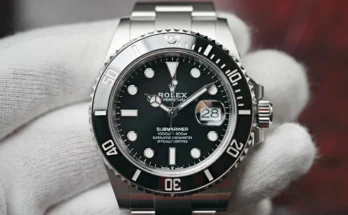Fibers can be both natural and synthetic. Synthetic fibers are used mainly for blended forms of fabrics. Some of the synthetic fabrics are polyester, nylon, spandex, and other combination. Spandex is the first choice for activewear fabrics for outfits like gym wear, athletic wear, and a lot more. Synthetic fibers were started producing to meet the growing demand of the people and now have become an essential part of the textile industry. Today, synthetic fabrics are used far more than natural fabrics. This article talks about the different pros and cons of synthetic fabrics to decide if it is useful for your present need or not along with some popular synthetic fabrics types.
Advantages of the synthetic fabrics
- They are moisture-wicking fabrics and are best suitable for outdoor use.
- They offer more thermal protection as compared to natural fabrics in cold weather.
- They are much more flexible and also have great elasticity.
- Due to synthetic fibers, these fabrics have anti-wrinkle properties.
- Synthetic fabrics are more durable and less costly.
- Synthetic fibers are available in a huge variety in the market.
- Have properties making them stain resistant.
- Wash up well and have good resilience.
- Resist shrinkage.
- Best suitable for activewear fabrics
Disadvantages of synthetic fabrics
- They are not safer for the environment and are not recyclable partially or fully
- Resist static change
- Cater allergies can create allergies too.
- Some of them are not easy to dyeGives thermal protection if they are a synthetic blend.
- Works well against extreme temperatures like hot water and irons
- Hold up the fire and melt much faster than natural fibers
- Most of them absorb moisture but some of them can be heavy when they are wet
Some Popular Synthetic Fabrics Types
Nylon
Nylon is a highly popular fabric in the textile industry. It is a petroleum-based plastic polymer that is predominantly used to produce fibers and textile fabrics.
Synthetic nylon, also known as polyamide, is an inexpensive material with exceptional properties. It is made using petrochemicals and it leads to cost savings for the company.
Nylon made its debut in the 1930s and has since become widely used in various applications.
Rayon
Rayon fabric is a versatile textile composed of semi-synthetic polymers, commonly used in the fashion industry for clothing fabrics.
Viscose, also known as viscose rayon, is a group of regenerated cellulosic fibers derived from cellulose-based materials like plants, wood, and agricultural waste.
The manufacturing of rayon involves significant processing and is often associated with high toxicity. The dissolution of cellulose using acids and chemicals is the method used to produce rayon.
Acrylic
Acrylic is a synthetic fiber derived from petroleum and is extensively used in the fashion industry to create fabrics. The material is produced using Polymethylmethacrylate (PMMA).
Acrylic fibers consist primarily of one component, acrylonitrile or vinyl cyanide. Acrylic yarn is popular among amateur knitters due to its durability and affordability.
In 1950, commercial production of acrylic began as a replacement for wool. Synthetic acrylic fabrics have numerous advantages and have steadily gained a more significant share of the market.
Polyurethane
Polyurethane (PU) is a thermoplastic polymer commonly used in the fashion industry as an artificial leather. This material is entirely synthetic and vegan, making it much more affordable than leather made from animal skins.
Polyurethane has emerged as a popular alternative to animal leather. Pure polyurethane fabrics are cruelty-free and entirely synthetic.
Polyurethane leather is easier to maintain, durable, strong, and environmentally friendly. It is available in a more extensive range of styles, patterns, and colors than traditional leather.
Polypropylene
Polypropylene is a synthetic textile widely utilized in the industrial sector, including the upholstery and apparel industries. It is also referred to as PP or polypropene and can be woven or non-woven.
Polypropylene is utilized in various products such as filters, face masks, and performance textiles. It is lightweight, soft, strong, and easy to clean.
The production of polypropylene involves synthetic thermoplastic polymers, with propylene gas being a by-product of oil and natural gas production.
Non-woven polypropylene fabrics are incredibly versatile and serve as some of the most durable materials available today. Many high-quality performance fabrics contain polypropylene.
Also Read: Best Fitness Fabric: Factors and Types
Conclusion
Synthetic fabrics have revolutionized the fashion industry and offer numerous advantages over traditional natural fibers. Synthetic fabrics like polyester, nylon, rayon, acrylic, and polyurethane are more affordable, durable, and versatile, and have a wider range of colors and patterns. They also tend to be easier to care for, wrinkle-resistant, and offer better resistance to stains, moisture, and weather. However, the production of synthetic fabrics requires significant energy consumption and generates a considerable amount of pollution, leading to environmental concerns.




